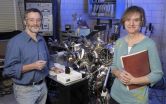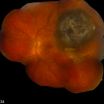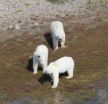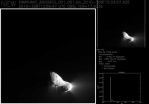(Press-News.org) When it comes to public issues pertaining to science and technology, "talking it out" doesn't seem to work. A new study from North Carolina State University shows that the more people discuss the risks and benefits associated with scientific endeavors, the more entrenched they become in their viewpoint – and the less likely they are to see the merit of other viewpoints.
"This research highlights the difficulty facing state and federal policy leaders when it comes to high-profile science and technology issues, such as stem cell research or global warming," says Dr. Andrew Binder, an assistant professor of communication at NC State and lead author of the study. "Government agencies view research on these issues as vital and necessary for the country's future, but building public consensus for that research is becoming increasingly difficult."
The researchers set out to see how people talk about risks associated with unfamiliar science and technology issues, Binder explains. "Most people, when faced with an issue related to science and technology, adopt an initial position of support or opposition," Binder says. "Our results demonstrate very clearly that the more people talk about divisive science and technology issues, the less likely the two camps are to see the issue in the same way. This is problematic because it suggests that individuals are very selective in choosing their discussion partners and hearing only what they want to hear during discussions of controversial issues."
In the study, the researchers focused on public debate related to the National Bio- and Agro-Defense Facility (NBAF), which the federal government discussed building in one of six sites around the country. Some members of the public opposed building a facility housing highly infectious animal diseases in their community. The six proposed sites were Athens, Ga., Manhattan, Kan., Plum Island, N.Y., Butner, N.C., Flora, Miss., and San Antonio, Texas. Manhattan was ultimately selected as the site for the NBAF.
The researchers conducted surveys of residents living near the proposed sites to collect data on people's perceptions of the potential risks and benefits associated with NBAF. Specifically, the results showed that, among people who opposed the facility, the more an individual discussed the issue with other people in their community, the more firmly entrenched he/she became in his/her perception of greater risks and fewer benefits. Conversely, among those who supported the facility, increased discussion led to an increased perception of benefits and a decreased perception of risks.
This research was done as part of an overarching grant project funded by the National Science Foundation, which is aimed at understanding the public opinion and policy dynamics surrounding site-selections for federal research facilities.
"This work will likely inform future decision-making on how federal agencies engage the public in regard to large-scale research initiatives," Binder says.
INFORMATION:
A paper describing the research, "Interpersonal Amplification of Risk? Citizen Discussions And Their Impact On Perceptions Of Risks And Benefits Of A Biological Research Facility," has been published online in the journal Risk Analysis. The paper is co-authored by Drs. Dietram Scheufele, Dominique Brossard and Albert Gunther, of the University of Wisconsin-Madison.
More talk, less agreement: Risk discussion can hurt consensus-building on science/technology
2010-11-05
ELSE PRESS RELEASES FROM THIS DATE:
Pennycress could go from nuisance weed to new source of biofuel
2010-11-05
A common roadside plant could have the right stuff to become a new source of biofuel, according to U.S. Department of Agriculture (USDA) studies.
Scientists with the Agricultural Research Service (ARS), USDA's principal intramural scientific research agency, have found that field pennycress yields impressive quantities of seeds whose oil could be used in biodiesel production.
Field pennycress belongs to the Brassicaceae family, along with canola, camelina and mustard—other prolific producers of oil-rich seeds. The ARS studies help support USDA's efforts to develop ...
Iowa State, Ames Laboratory scientists advance the understanding of the big getting bigger
2010-11-05
AMES, Iowa – Patricia Thiel of Iowa State University and the Ames Laboratory put a box of tissues to the right, a stack of coasters to the middle and a trinket box to the left.
"Nature," she said of her table-top illustration, "doesn't want lots of little things." So Thiel grabbed the smaller things and slid them into a single pile next to the bigger tissue box. "Nature wants one big thing all together, like this."
Thiel, an Iowa State Distinguished Professor of Chemistry and a faculty scientist for the U.S. Department of Energy's Ames Laboratory, and James Evans, an ...
Global food safety: Keeping food safe from farm to table
2010-11-05
Washington, DC – November 2, 2010 – Food safety problems can arise at any of multiple stages of food production, and illnesses that result from them are frequently not detected or reported, according to a new report from the American Academy of Microbiology.
The report, "Global Food Safety: Keeping Food Safe from Farm to Table," is based on a colloquium convened by the Academy in 2009. Colloquium participants with expertise in microbiology, public health, food science, and economics reviewed the current state of affairs in microbiological food safety around the world.
The ...
Gene identified for spread of deadly melanoma
2010-11-05
AUDIO:
Researchers at Washington University School of Medicine in St. Louis have identified a gene linked to the spread of melanoma of the eye. Although more research is needed, the researchers...
Click here for more information.
Researchers at Washington University School of Medicine in St. Louis have identified a gene linked to the spread of eye melanoma.
Although more research is needed, the researchers say the discovery is an important step in understanding why some ...
Missouri Botanical Garden researchers discover 8 new species in Boliva national parks
2010-11-05
(ST. LOUIS): Botanists at the Missouri Botanical Garden have described eight new plant species collected in the Madidi National Park and surrounding areas located on the eastern slopes of the Andes in northern Bolivia. The new species are from several different genera and families and are published in a recent edition of the Missouri Botanical Garden journal Novon.
Missouri Botanical Garden scientists and colleagues from the National Herbarium in La Paz, Bolivia describe Prestonia leco, Passiflora madidiana, Siphoneugena minima, Siphoneugena glabrata, Hydrocotyle apolobambensis, ...
Polar bears can't eat geese into extinction
2010-11-05
As the Arctic warms, a new cache of resources—snow goose eggs—may help sustain the polar bear population for the foreseeable future. In a new study published in an early online edition of Oikos, researchers affiliated with the Museum show that even large numbers of hungry bears repeatedly raiding nests over many years would have a difficult time eliminating all of the geese because of a mismatch in the timing of bear arrival on shore and goose egg incubation.
"There have been statements in popular literature indicating that polar bears can extirpate snow geese quickly ...
Pigs reveal secrets: New research shines light on Quebec industry
2010-11-05
Which are the best pieces of pork, what their texture is, how moist they are – the secrets pigs keep from even the most skilled butchers – are about to be revealed, thanks to a sophisticated new technique that has been developed by McGill University researchers in conjunction with Agriculture Canada and the pork industry. "This is about giving industry workers better tools to do their job," explained Dr. Michael Ngadi of McGill's Department of Bioresource Engineering. "Computer-aided analysis of meat will result in higher-quality jobs, optimal production, and exports that ...
Hard work improves the taste of food, Johns Hopkins study shows
2010-11-05
It's commonly accepted that we appreciate something more if we have to work hard to get it, and a Johns Hopkins University study bears that out, at least when it comes to food.
The study seems to suggest that hard work can even enhance our appreciation for fare we might not favor, such as the low-fat, low calorie variety. At least in theory, this means that if we had to navigate an obstacle course to get to a plate of baby carrots, we might come to prefer those crunchy crudités over the sweet, gooey Snickers bars or Peanut M&Ms more easily accessible via the office vending ...
Burning pain and itching governed by same nerve cells
2010-11-05
There are disorders and conditions that entail increased itching and can be extremely troublesome for those suffering from it. The mechanisms behind itching are not well understood today. For one thing, what is it about scratching that relieves itching?
In the current study, which was performed on mice, the research team led by Professor Klas Kullander at the Department of Neuroscience examined the nerve cells that transfer heat pain. When these nerve cells had lost its capacity to signal, the mice reacted less to heat, as expected, but surprisingly they also started ...
UMD-led deep impact spacecraft successfully flies by comet Hartley 2
2010-11-05
COLLEGE PARK, Md. – The University of Maryland-led EPOXI mission successfully flew by comet Hartley 2 at 10 a.m. EDT today, and the spacecraft has begun returning images. Hartley 2 is the fifth comet nucleus visited by any spacecraft and the second one visited by the Deep Impact spacecraft.
Scientists and mission controllers are studying never-before-seen images of Hartley 2 appearing on their computer terminal screens. See images at: http://epoxi.umd.edu/
"We are all holding our breath to see what discoveries await us in the observations near closest approach," said ...




